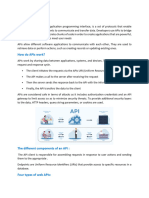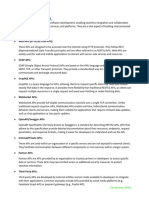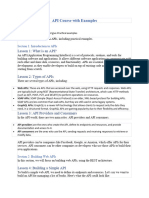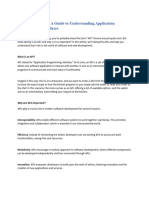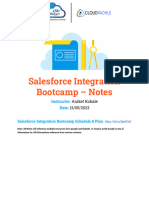0% found this document useful (0 votes)
24 views3 pagesUnderstanding APIs Guide
This document provides a comprehensive guide to APIs, explaining their importance, types, architectures, components, and security measures. It highlights the necessity of good documentation and tools for working with APIs, along with practical use cases. Key API types include Open, Internal, Partner, and Composite APIs, while common architectures are REST, SOAP, GraphQL, and gRPC.
Uploaded by
Karim Abd Al-RahimCopyright
© © All Rights Reserved
We take content rights seriously. If you suspect this is your content, claim it here.
Available Formats
Download as PDF, TXT or read online on Scribd
0% found this document useful (0 votes)
24 views3 pagesUnderstanding APIs Guide
This document provides a comprehensive guide to APIs, explaining their importance, types, architectures, components, and security measures. It highlights the necessity of good documentation and tools for working with APIs, along with practical use cases. Key API types include Open, Internal, Partner, and Composite APIs, while common architectures are REST, SOAP, GraphQL, and gRPC.
Uploaded by
Karim Abd Al-RahimCopyright
© © All Rights Reserved
We take content rights seriously. If you suspect this is your content, claim it here.
Available Formats
Download as PDF, TXT or read online on Scribd
/ 3











